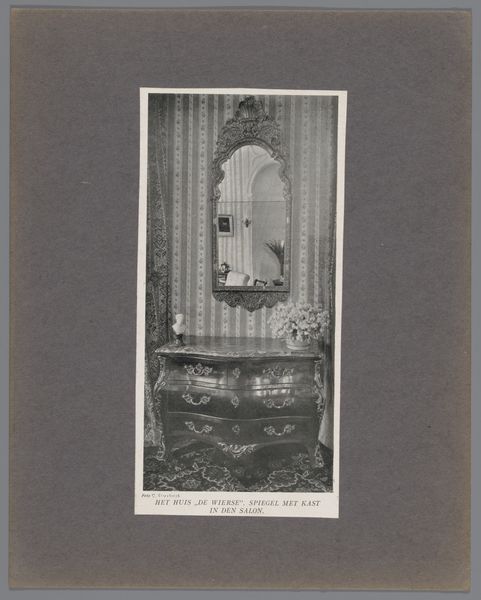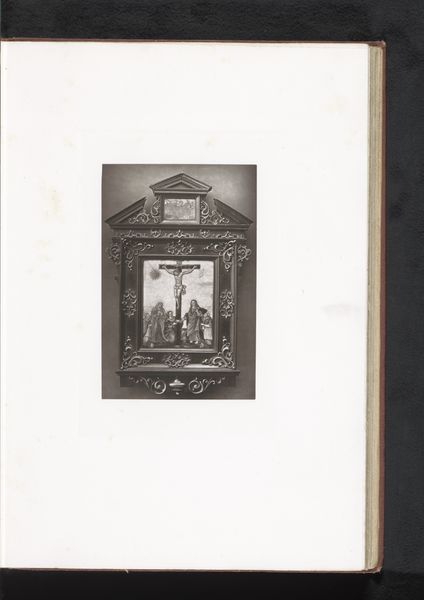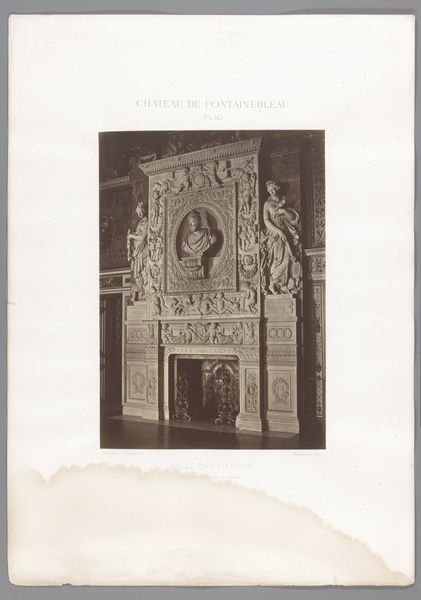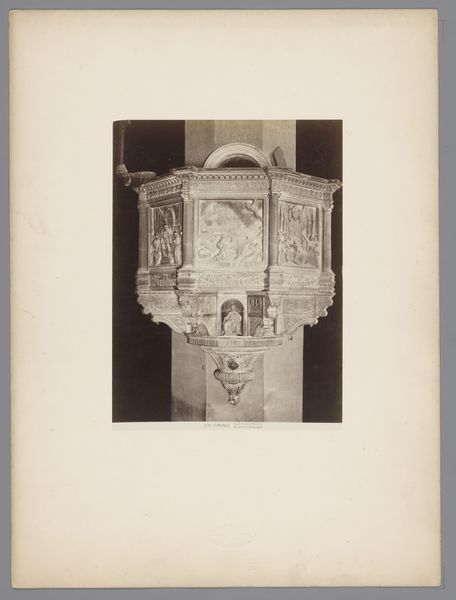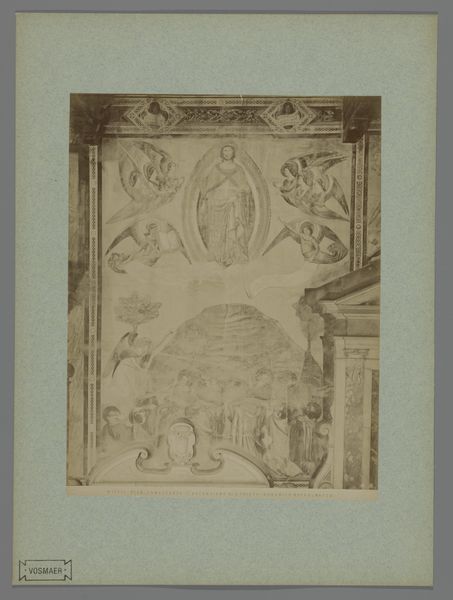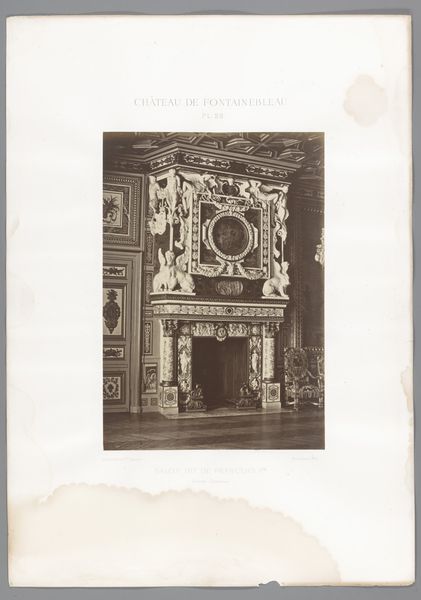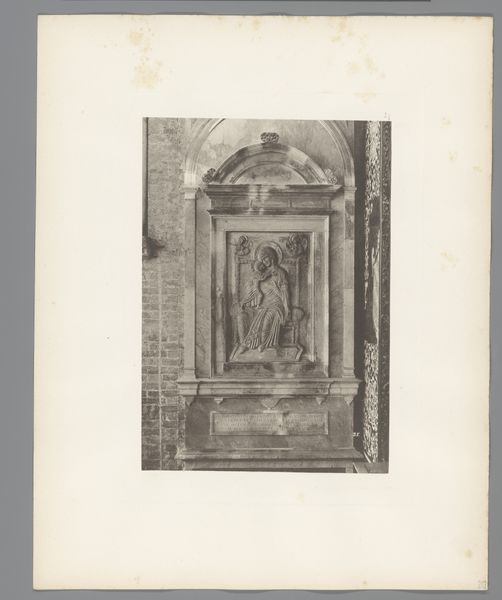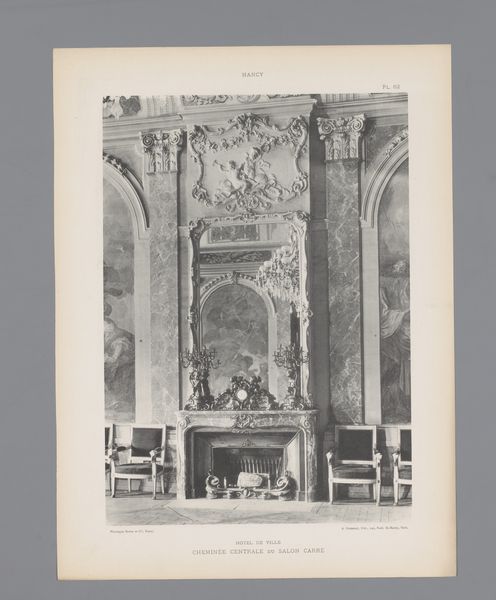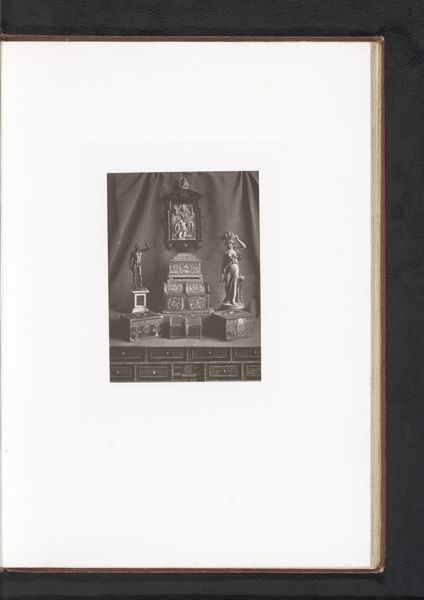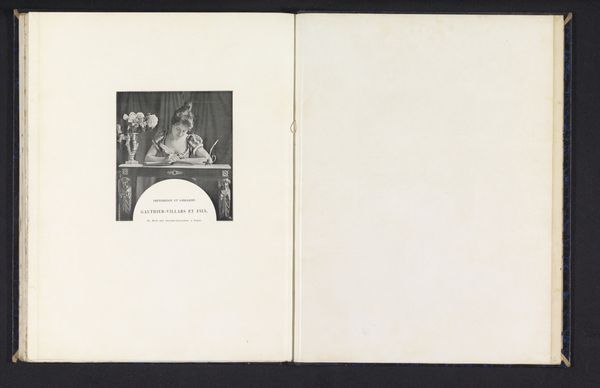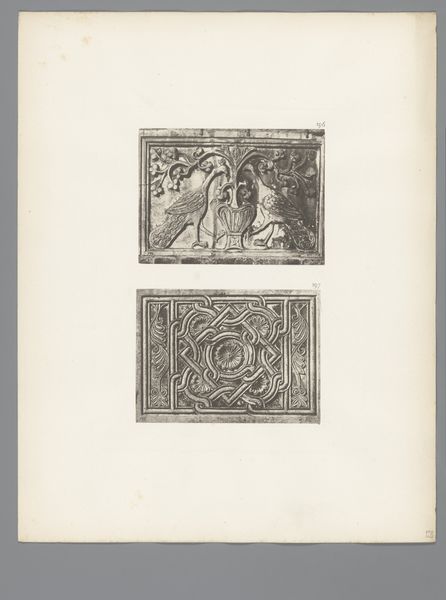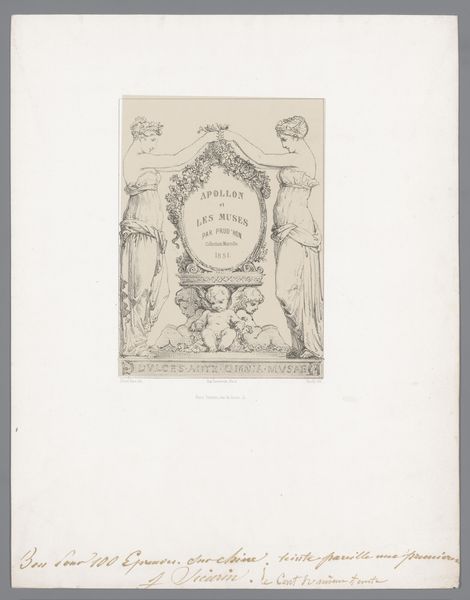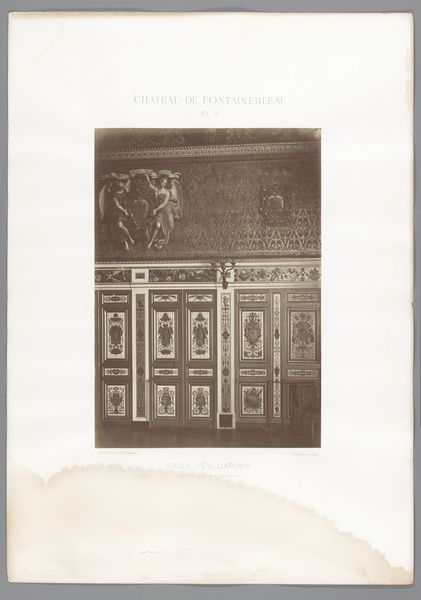
photography
#
photography
#
history-painting
Dimensions: height 195 mm, width 106 mm
Copyright: Rijks Museum: Open Domain
Curator: Let’s turn our attention to this photograph by C. Steenbergh, likely taken between 1885 and 1900. It depicts "Schouw in de voorhal van het Frans Halsmuseum te Haarlem," capturing a grand fireplace in the museum's entrance hall. Editor: My initial reaction? Opulence! The sheer size of that fireplace and the elaborate carvings practically scream wealth and power. I am very much drawn to the material presence of the object shown and how it manifests the cultural trends. Curator: Exactly. Consider that this image was created at a time when museums were solidifying their role as cultural institutions. The Frans Hals Museum, like many others, used its architecture and interior design to convey authority and taste. A photograph like this played a role in shaping public perception of the museum itself. Editor: Yes, and the materiality is key. It's a bit hard to tell just from a photograph, but it seems like we’re looking at various materials here. I notice the stone carving of what appears to be white marble, if not other varieties of quarried stones. I also see a metal decorative plate on the floor of the opening. So, what processes and types of labour are we talking about here? From extraction, transportation to its ultimate creation and place as a decorative art form. Curator: That’s right. Each choice, from the subjects painted on the mantle to the cherubic figures adorning it, reflects a specific cultural agenda. The building becomes an art form in itself, meant to instill both reverence and civic pride. Note how its placement within the Frans Hals Museum helps preserve that heritage. Editor: Right, and thinking about photography as a medium here too. It captures and reifies this crafted display, mass producing that message of power, luxury and craftsmanship. I wonder what sorts of social networks played a role to maintain and display such status objects. Curator: So while the image documents a beautiful object, it simultaneously reinforces certain social and cultural hierarchies that were prevalent at the time. Editor: I agree, analyzing it allows us to really dig into those layered social dynamics inherent to both the production and the space. Curator: Looking at this photograph offers a chance to unravel the complex story of not just a museum, but of art's role in shaping social narratives. Editor: Definitely a rich example for us to dive deep and observe the processes of labor, class and visual representation on view!
Comments
No comments
Be the first to comment and join the conversation on the ultimate creative platform.
